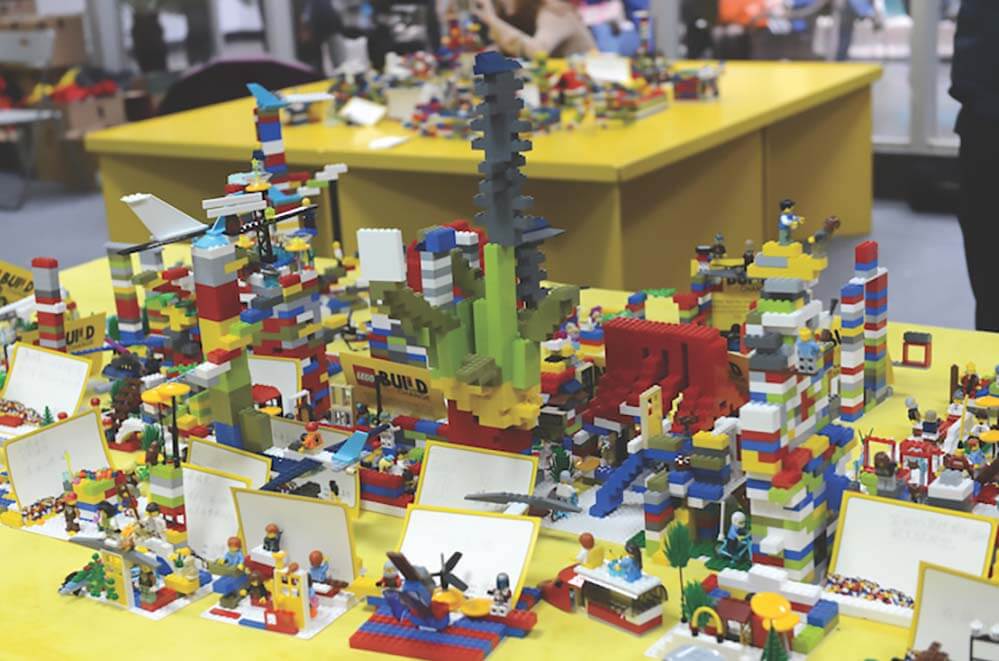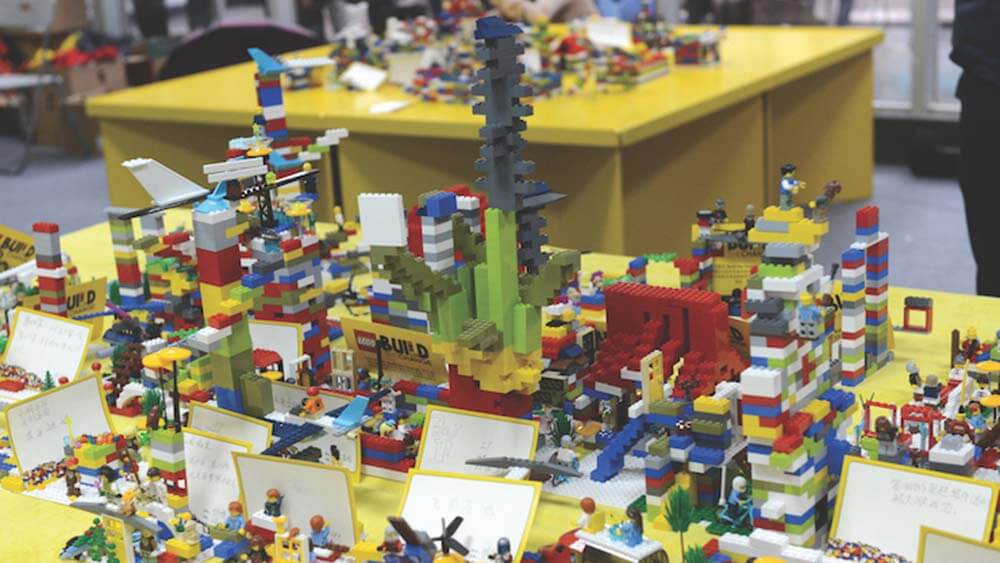
Build the Change events have the same mission no matter where they take place: empower kids to literally design their own futures — using LEGO bricks.
In 2004, the LEGO Group was facing a crisis. Sales had plummeted and the Danish company lost more than $200 million in a single year. As debts continued to stack up, bankruptcy seemed inevitable.
LEGO set out to rebuild itself. Hiring a new CEO was a major first step, but the company also needed to remind consumers why they loved its product. And the solution, at least in part, took the form of a new event.
“The idea was to get out to our consumers — families with children — and give them a good experience with LEGO bricks,” said Camilla Torpe. Torpe has managed the event designed around that goal, called Build the Change, since it debuted in 2007. Over the last 11 years, she’s helped it grow into a global initiative that touched down in 17 different cities last year and reached more than 680,000 children.
While its locations span the globe, Build the Change has the same mission at every site: empower kids to literally design their own futures — using LEGO bricks, of course. Each Build the Change centers on a theme. Build your future school, build your neighborhood, and build your city are frequent requests, but kids have also come up with solutions for helping bees survive and developing sustainable housing.
LEGO ships in roughly a thousand pounds of its bricks for each event and, after introducing the build’s theme, invites kids to start imagining and tinkering. When they’re finished, the kids make signs explaining what they’ve created, and key decision-makers — which have included city architects, mayors, and school superintendents — visit to see what they’ve come up with.
Torpe said the connection to the company’s broader mission is obvious: “It’s about learning through play,” she said. “We think that play is essential. And while playing, you learn to use a lot of different skills — you learn communication, collaboration, motor skills, cognitive abilities, you use your creativity.”
Managing the Build Out
Originally known as Build Your City — a nod to the LEGO company’s numerous city-themed building sets — the event debuted in four museums across Denmark on the same day in 2007. LEGO CEO Jørgen Vig Knudstorp went from site to site, scoping out what the kids had made at each. (It was easier than it sounds; Denmark is roughly the size of Maryland.)
The next year, Build the Change expanded to 10 Nordic cities. Year by year, word spread and sites began approaching the LEGO Group, eager to host a Build the Change in their own regions. The event has now been held everywhere from Dallas to Dubai. Torpe just returned from a build in Moscow, where the event partnered with a hospital clown organization and asked inpatient kids to come up with design ideas for a children’s hospital. When it arrives in South Africa this fall, Build the Change will have officially reached every continent.
Schools and museums frequently invite Build the Change to their cities, but Torpe says the company also selects locations based on areas that need, as she put it, “to get acquainted with the LEGO bricks.”
The event relies on its local partners at each site to market the build, and the LEGO Group and its LEGO Foundation provide full funding for every Build the Change.
Each event attracts an average of 200-300 children, and some of the builds run for a week — even up to a month. All of the bricks are collected at each build’s conclusion and used for future Build the Change events.
Torpe said that it’s a pretty mind-blowing moment for a kid to walk in and see thousands of LEGO bricks at their disposal, but she said that they’ve found that the kids are often equally excited to have their voices heard. Around the world, Build the Change has helped directly inspire adult decision-makers who are searching for fresh ideas. In Norway, kids offered their designs to pretty up an outdoor food market — and several of their ideas were actually implemented. A park in Denmark also instituted kids’ designs from a LEGO build.
“These ideas come from children because they don’t have any barriers,” Torpe said. “They don’t think, ‘We can’t do that because it’s too expensive or too difficult.’ They just put it out there — their wishes from their inner heart.”
Getting Staff Involved
While kids are the doers at every Build the Change event, each rendition also requires facilitators. The LEGO Group’s Camilla Torpe says that the company first taps its own employees for help; they each receive two days a year to volunteer at events like Build the Change. If an internal request doesn’t supply enough helpers, Torpe asks partner sites to wrangle up their own volunteers. Wherever they come from, every facilitator completes a training course before assisting at a build.
The training aspect reflects the LEGO Group’s “Responsibility Story,” published on its website: “As a provider of play experiences, we must ensure that our behavior and actions are responsible towards all children and towards our stakeholders, society and the environment. We are committed to continue earning the trust our stakeholders place in us, and we are always inspired by children to be the best we can be.”
Learn more about Build the Change events at lego.com.

